Have you ever wondered how the effects of child sexual abuse shape a person’s adult life?
Or how survivors cope with the deep emotional pain they carry?
Below are the answers to these questions.
Child sexual abuse (CSA) doesn’t just vanish with time—it seeps into the very fabric of adulthood, often in ways that are quiet yet powerful. The repercussions are real, even though the scars are invisible: worry, shattered trust, interpersonal issues, and a feeling that one is not deserving of love or happiness. Survivors may struggle to understand how the past continues to influence their present as adults, becoming mired in patterns of emotional numbness, loneliness, or self-doubt.
But these aftershocks don’t have to define the future. With awareness, support, and healing, survivors can rewrite their stories, build healthier relationships, and reclaim the joy that’s rightfully theirs. Understanding these hidden aftershocks is the first step towards reclaiming a life of wholeness, peace, and empowerment.
In the previous blog, we explored the long-term psychological, emotional, and social effects of child sexual abuse. We discussed how it affects self-esteem, relationships, and mental health, shaping the way survivors navigate their daily lives.
Now, in this part, we will delve into the hidden coping mechanisms and behavioral patterns that survivors adopt to manage their pain. From addiction and self-harm to hypervigilance and the pursuit of control, these responses reveal the silent struggles survivors face and explore the ways in which survivors can reclaim their lives because with the right support, healing strategies, and interventions, a path to resilience and recovery is possible.
Survival Strategies: How CSA Survivors Cope with Deep Emotional Wounds
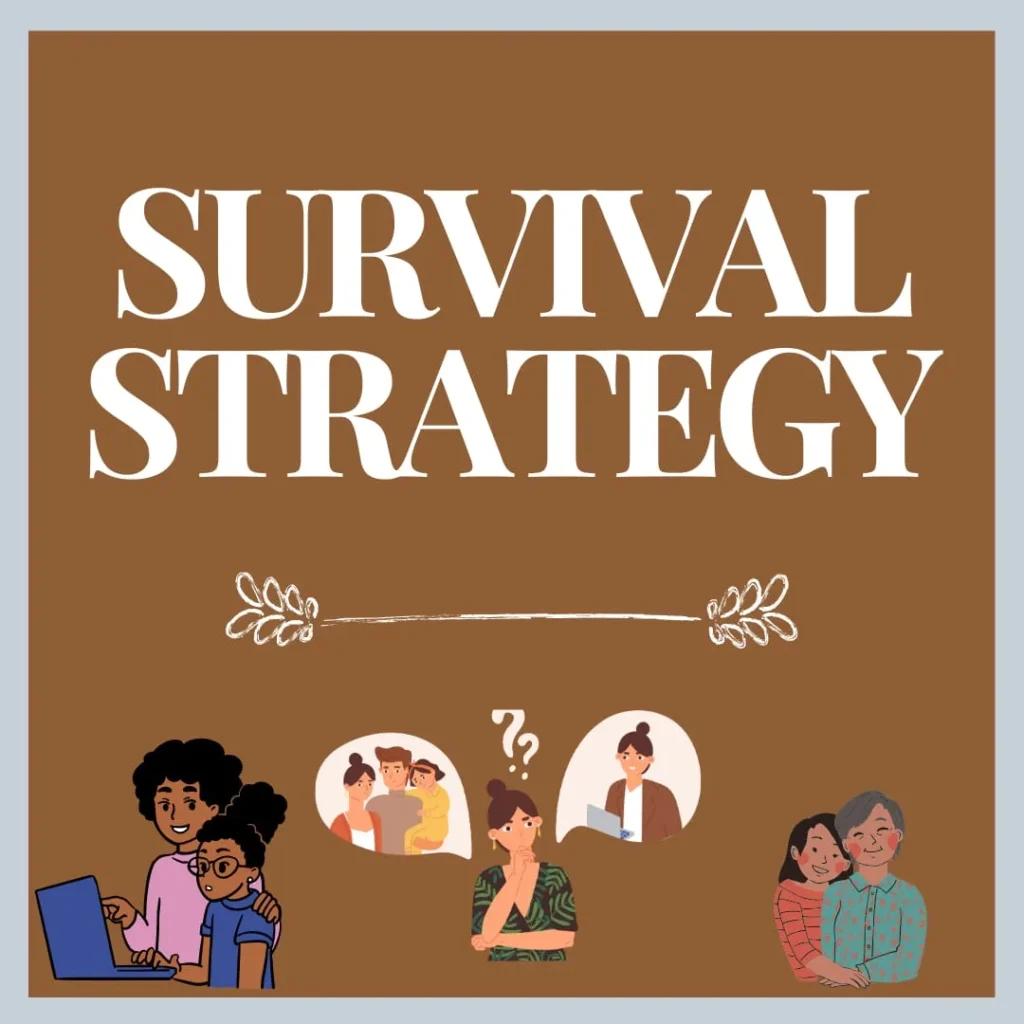
Survivors of child sexual abuse often experience severe scarring/trauma that lasts for a prolonged duration. As a means of dealing with the trauma they experienced, many adult survivors adopt behavioural and coping strategies. These processes, which may be maladaptive or adaptive, considerably influence how they live their lives and interact with others.
By understanding these behaviours, we can better identify those in need of support and intervention, helping them find a path toward recovery and resilience. This part of the blog explores how survivors go through life post-abuse, examining their coping strategies and the profound impact of unresolved trauma.
- Abuse and Addiction-
Substance abuse and addictions are common coping mechanisms used by adult CSA survivors to deal with the poignant feelings and memories connected to their experiences. Drug and alcohol abuse result from this coping mechanism, which first provides a little reprieve from misery but eventually makes it worse, underlying mental health problems. - Self-Harm and Suicidal Ideation-
– Feelings of shame, guilt, and worthlessness often accompany the trauma of CSA, leading many survivors to engage in self-harm or struggle with suicidal thoughts. These behaviours can provide a temporary sense of relief but ultimately signal a cry for help.
– Self-harm, such as cutting or burning, often stems from an attempt to manage emotional pain or regain a sense of control.
– Suicidal ideation arises from persistent feelings of hopelessness and despair.
A closer look at the numbers- Research indicates that victims of CSA are significantly more likely to engage in self-harming behaviours compared to the general population, highlighting the urgent need for trauma-informed mental health support. - Hypervigilance, Control, and Risk-Taking Behaviours-
– Adult survivors of child sexual abuse (CSA) often develop behaviors rooted in a deep-seated need for safety and control. These behaviours can significantly influence their daily lives and relationships.
– Always on edge: Survivors frequently experience heightened alertness, constantly scanning their surroundings for potential threats. This state of hypervigilance, while protective in unsafe environments, often leaves survivors unable to relax or feel secure, even in safe environments.
– Need for control: Strong need to maintain control over their environment can emerge, as it offers survivors a sense of stability amidst lingering chaos from their past. However, this can strain relationships and make everyday interactions challenging.
– Risky escapes: On the flip side, some survivors engage in risky activities, such as unsafe sexual practices, reckless driving, or substance misuse. These actions might stem from attempts to assert autonomy, escape emotional pain, or fill an internal void.
Did you know?
• Victims of CSA are 12 times more likely to report conduct disorders, reflecting the impact of unresolved trauma.
• They are also 1.4 times more likely to have contact with law enforcement and nearly five times more likely to face criminal charges.
These behaviours, whether rooted in hypervigilance, control, or risk-taking, highlight the long-term effects of child sexual abuse and underscore the urgent need for comprehensive support and intervention.
Myth-Busting: Can Survivors Ever Lead Fulfilling Lives Beyond Trauma?
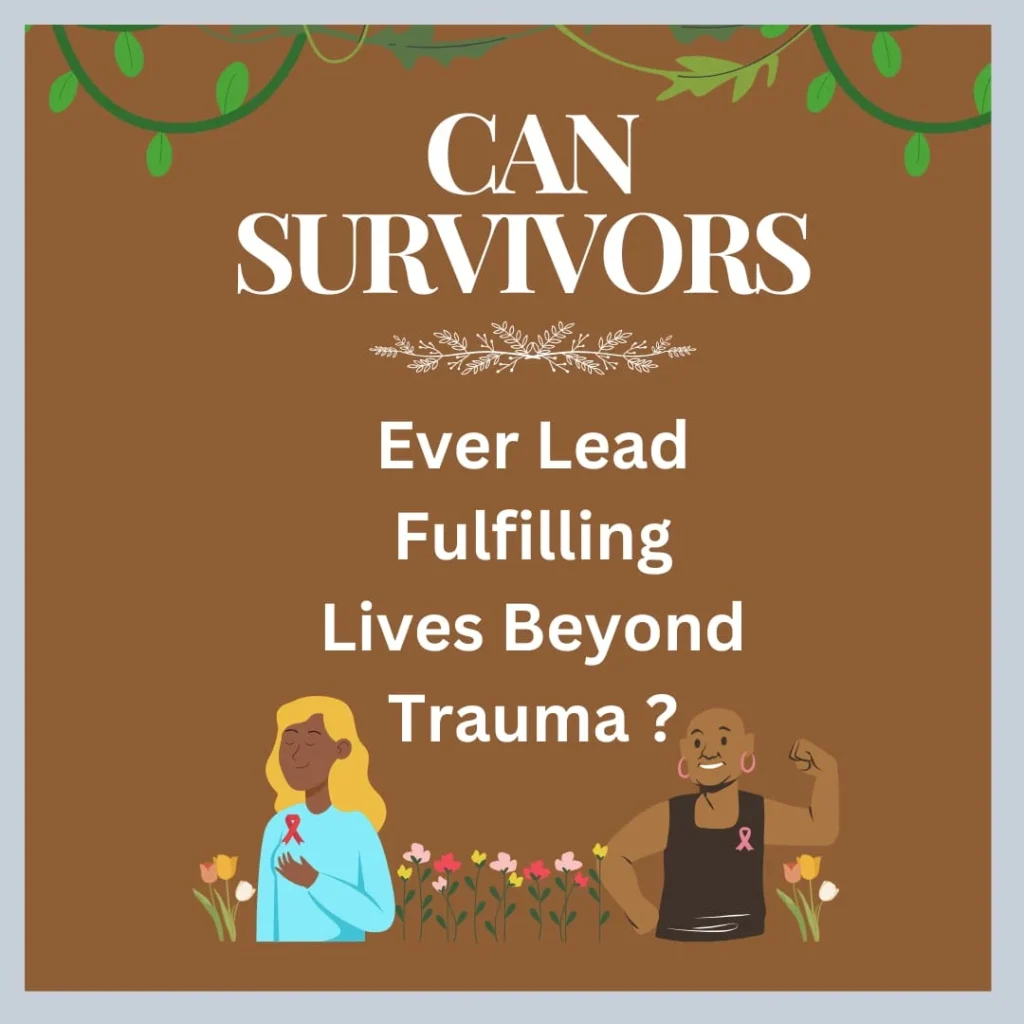
Before discussing the Next part of the blog which is about support available for survivors to overcome the effects of child sexual abuse and start the inclusive journey of healing and recovery let’s bust the biggest myth ponder around the healing and recovery of survivors.
Myth–
“Survivors Can’t Lead Fulfilling Lives Beyond Trauma”
“They say broken things can never be whole again. But have you seen kintsugi—how gold fills the cracks, making something even more beautiful?”
One of the biggest misconceptions surrounding child sexual abuse survivors is the belief that their trauma defines them forever, leaving them incapable of leading fulfilling lives. But the truth is far more inspiring—healing is not only possible, it’s transformative.
With the right support, therapy, and self-belief, survivors can reclaim their lives and turn their pain into purpose. They become writers, doctors, artists, and activists—living proof that resilience shines brighter than trauma. Healing is a deeply personal journey, and every survivor’s path is unique, filled with strength, hope, and the capacity for joy.
Now that we’ve debunked this myth, let’s explore the healing and recovery support available to help survivors rise above their trauma and embrace life fully.
The Road to Recovery: How Survivors Can Overcome the Effects of Child Sexual Abuse
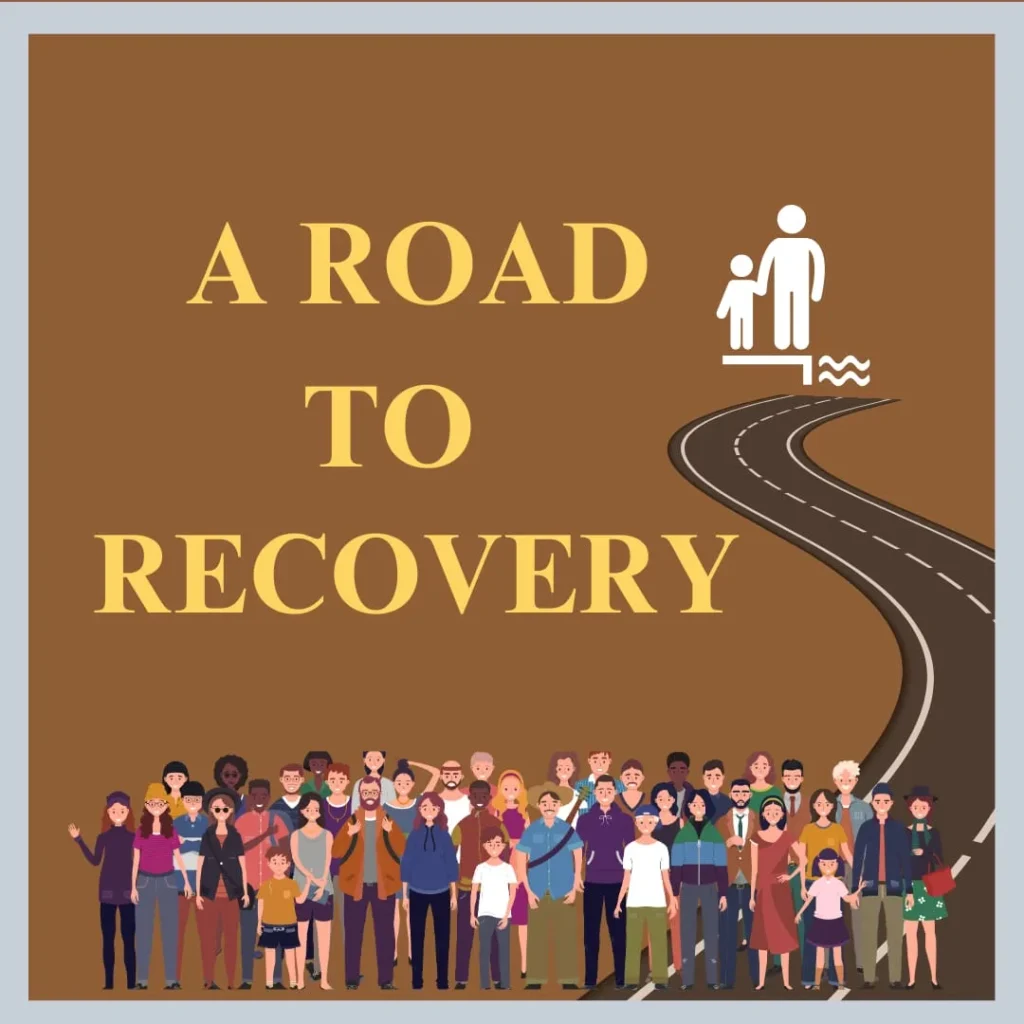
The effects of child sexual abuse can have a profound impact on survivors’ psychological, physical and social health. However, survivors can manage their symptoms and improve their quality of life through various therapeutic interventions and support systems.
- Therapy and Mental Health Support
- Counseling & Professional Therapy
-Provides a safe and supportive environment for survivors to explore their emotions, confront painful memories, and develop healthy coping mechanisms. - Evidence-Based Therapies
-Cognitive-Behavioral Therapy (CBT): Helps change negative thought patterns and behaviors linked to trauma.
-Eye Movement Desensitization and Reprocessing (EMDR): Aids in processing traumatic memories by using guided eye movements.
-Trauma-Focused CBT (TF-CBT): Focuses on helping children and adolescents cope with the emotional aftermath of trauma.
-Dialectical Behavior Therapy (DBT): Teaches mindfulness, emotional regulation, and how to manage distressing emotions.
These therapeutic approaches collectively assist survivors in processing trauma and fostering emotional resilience.
- Building a Support System
- Support from Loved Ones -Family and friends can provide emotional stability, but it’s essential to approach survivors with sensitivity and care.
- Support Groups -Both in-person and online groups offer survivors a safe space to share experiences and connect with others facing similar challenges. Support groups help in the exchange of coping strategies and offer a sense of belonging and understanding.
- Self-Care: A Key Component of Healing
- Mindfulness & Meditation help regulate emotions and promote inner peace.
- Journaling provides a way to track progress and process thoughts.
- Self-Compassion encourages treating oneself with kindness, patience, and understanding during the healing journey.
By integrating these therapeutic interventions, support systems, and self-care strategies, CSA survivors can work through their healing journey with resilience and hope.
The Role of Bachpan: A Safe Haven for Healing
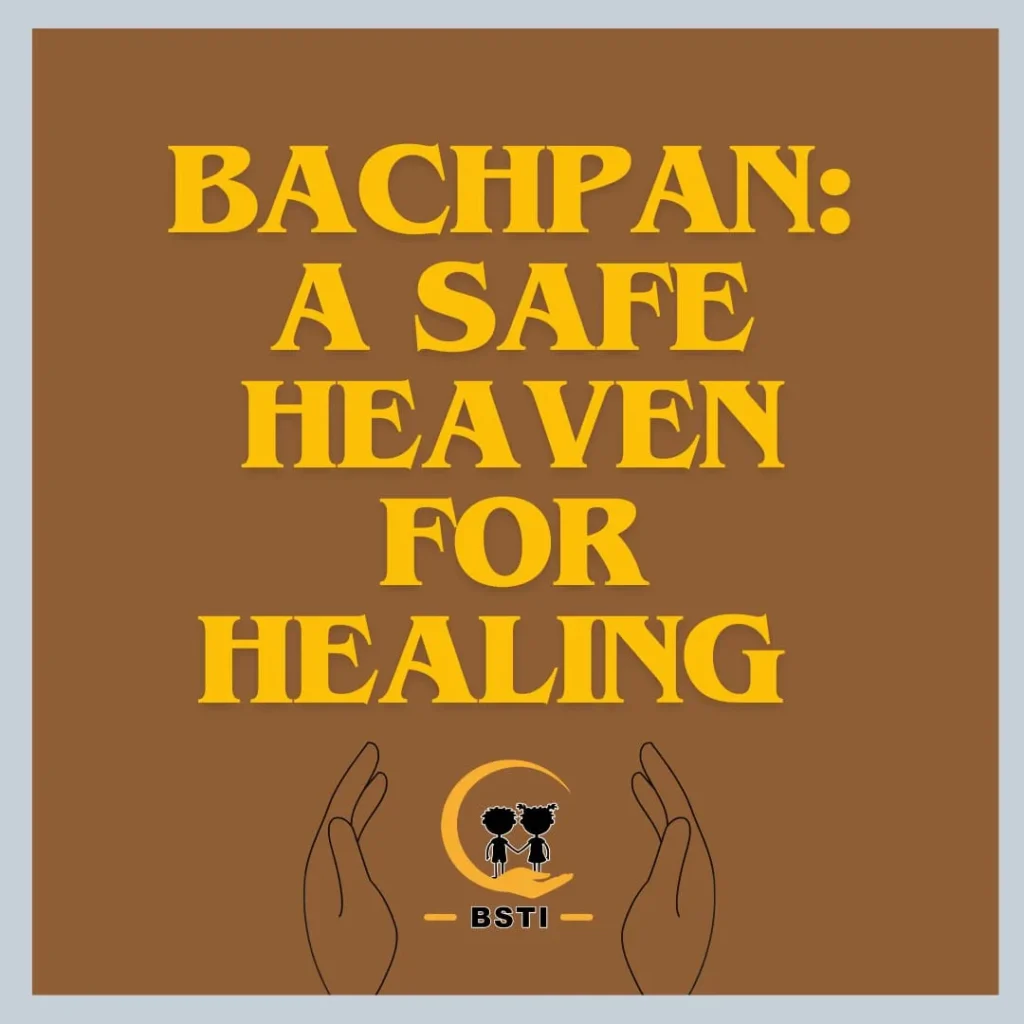
Bachpan Save the Innocence isn’t just an NGO—it’s a movement dedicated to preventing child sexual abuse and supporting survivors on their journey to healing. Bachpan believes, “Support isn’t just something you need; it’s something you deserve.”
With a compassionate and survivor-centric approach, Bachpan offers a range of initiatives designed to provide safety, understanding, and empowerment.
- I.B.Y. Box (I Believe You Box)
Sometimes, the hardest step is speaking up. The I Believe You Box offers survivors a safe, anonymous space to share their experiences without fear of judgment. It’s more than just a platform—it’s a place where survivors are heard, validated, and encouraged to unburden their hearts.
- H.O.P.E. (Hold On, Pain Ends)
Healing is easier when you’re not alone. The H.O.P.E. initiative brings together CSA survivors in age-appropriate, anonymous support groups where they can connect, share, and uplift one another. It fosters a sense of belonging and mutual understanding, reminding survivors that healing is not just possible—it’s within reach.
- Art Therapy Sessions
When words fall short, art speaks. Bachpan offers both online and offline art therapy sessions led by professional therapists and psychologists. These sessions provide survivors with a creative, expressive outlet to process their trauma in a safe and supportive environment.
- Expert Team Support
No survivor should have to navigate their healing journey alone. Bachpan’s dedicated team of psychologists and therapists provide professional guidance, offering the emotional and psychological support survivors need to rebuild their confidence and reclaim their lives.
At Bachpan, every initiative is carefully designed to create a holistic and nurturing space where survivors feel seen, supported, and empowered. Whether through storytelling, connection, or creative expression, Bachpan stands as a beacon of hope.
“You are not alone, and at Bachpan, your voice matters.”
Together, We Heal: How Communities Can Support CSA Survivors?
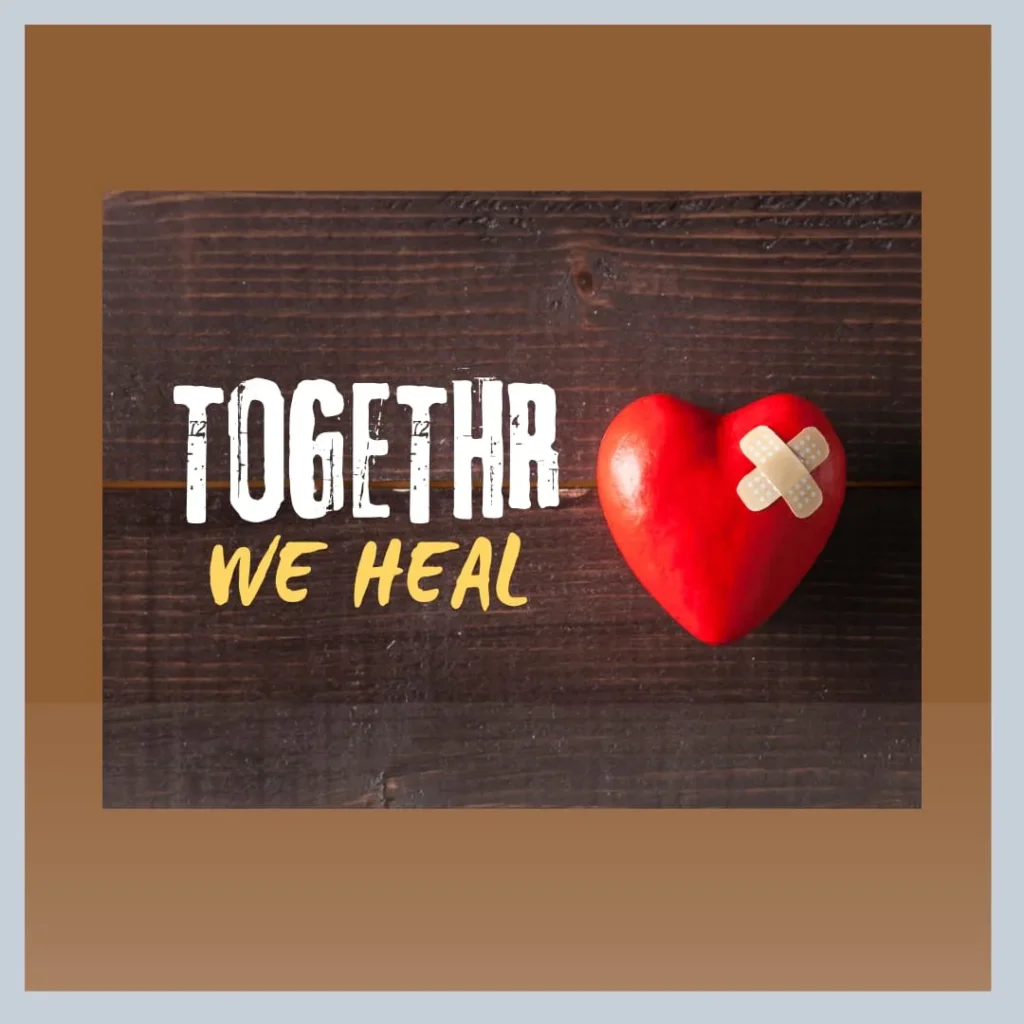
Myth- “Society Has No Role in Supporting Survivors”
“A single candle can light up the darkest room, but imagine what happens when an entire community becomes the flame.”
A common misconception is that healing from child sexual abuse is a solitary journey—one that survivors must navigate alone. But the truth is, no one heals in isolation. Society plays a vital role in shaping a survivor’s path to recovery. When communities come together to listen, educate, and advocate, they create safe spaces where survivors can heal without fear or stigma. Compassion and awareness can dismantle harmful myths, ensuring survivors feel seen, heard, and supported.
Healing is not just about surviving the past; it’s about building a fulfilling future. The road to recovery may be challenging, but with the right support systems, professional care, and a nurturing community, survivors can move forward with resilience and hope. Organizations like Bachpan Save the Innocence are working tirelessly to provide survivors with the safe spaces they deserve—places where their voices matter, their struggles are acknowledged, and their healing is prioritized.
Ultimately, healing is a shared responsibility. As individuals and as a society, we must continue to foster understanding, provide resources, and advocate for trauma-informed care. Because when support is available, survivors don’t just recover—they thrive.
